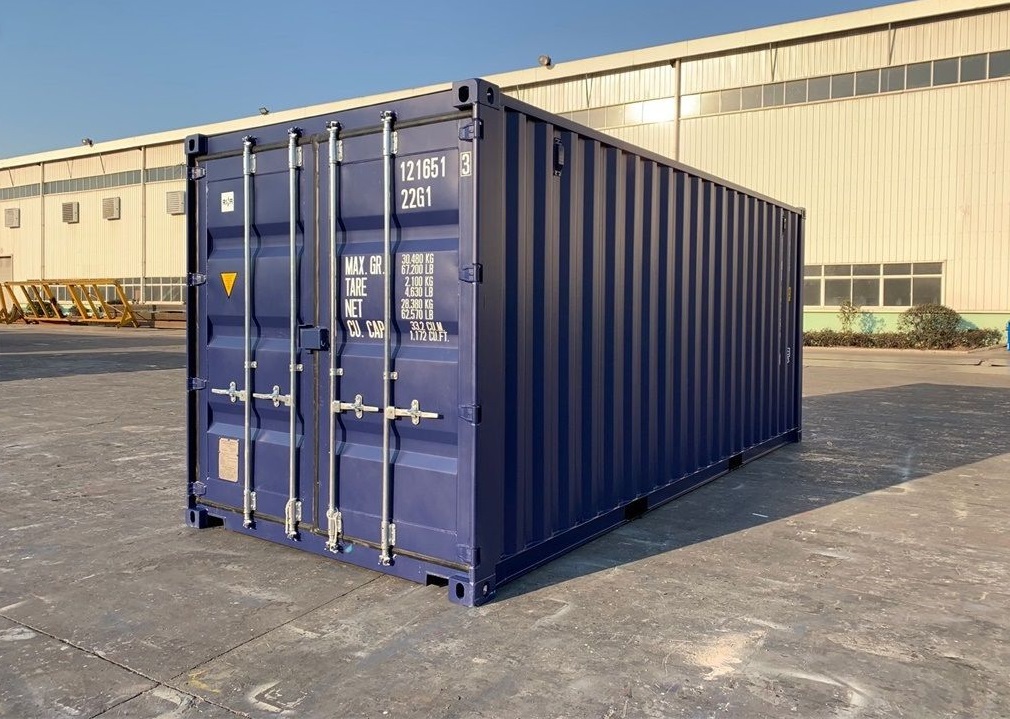What is a shipping container ?

A shipping container is a large, sturdy, reusable steel box used to transport manufactured goods and commodities from point A to point B. From household items such as coffee tables and TVs to microwave ovens, our purchasing center Belle France has many years of experience in the art of shipping containerized goods worldwide.
Before 1956, the maritime transport industry was characterized by a traditional shipping method, where each box or carton had to be manually lifted, moved, and stacked aboard a ship. This approach made the process of loading and unloading goods not only long and laborious but also costly and inefficient. Workers spent countless hours handling and organizing these packages, leading to delays in transportation and increased risks to the safety of people and property.
Subsequently, Malcom McLean revolutionized the maritime transport sector by introducing the innovative concept of containerization. This innovation involves gathering all the goods in secure and standardized containers, thus facilitating their handling, transport, and storage. Containerization has significantly reduced congestion in ports by optimizing space and streamlining the loading and unloading processes.
Moreover, it has allowed for shorter shipping times by simplifying handling operations and reducing the downtime of ships in ports. Finally, thanks to this method, damages to goods during transport and thefts have been significantly reduced, as containers offer enhanced protection and better traceability of the transported goods. Thus, containerization has transformed the maritime transport industry, making it more efficient, safer, and more profitable.
At CABF, we have the ability to create fully secure multi-product containers. We can even send refrigerated and frozen goods to the other side of the planet, from Mali to Haiti, passing through Cambodia or Senegal… and even Canada.
All of this is made possible not only by our seamless logistics, but also by container technology that enables ordering stock for your grocery aisle from 6000 km away.
Thanks to these simple yet revolutionary ideas, maritime containers have significantly boosted international trade by contributing to the sustainability of economies worldwide.
What are the different container sizes?
Standardized containers are typically available in two main lengths, namely 20 feet and 40 feet, with a width of 8 feet and a height of 8.5 feet. These dimensions facilitate their handling, stacking, and transportation.
Furthermore, there are also smaller containers measuring 3 meters in length. However, these are not as commonly used in the maritime transport industry, as their secure stacking with 20- and 40-foot containers proves to be more complex. The difference in size can indeed lead to stability and securing issues during the loading and unloading of ships, which could compromise the safety of operations and the integrity of the transported goods.
As a result, 20-foot and 40-foot containers remain the preferred choices for international maritime transportation due to their standardization and compatibility with existing port infrastructure and handling equipment.
At CABF, we provide you with the option to order 20-foot or 40-foot containers, which can be filled with a diverse and personalized assortment according to your specific needs. Whether you want to order products from our private label, Belle France, or items from national or discounted brands, we are capable of supplying complete containers tailored to your supermarket.
For shipments that require additional vertical space, we also offer high-cube containers (HC containers) with a total height of 9.5 feet. Since transportation costs are largely fixed, this allows you to better control your expenses and optimize your store’s profitability. Furthermore, this facilitates the streamlining of your logistics operations by tailoring containers to the specific requirements of your business.
In essence, at CABF, we are committed to offering you flexible and personalized transportation solutions, aiming to best meet your expectations and ensure the success of your business.
The technological evolution of maritime containers
The technology of maritime containers is constantly advancing, with the emergence of containers specially designed for various types of goods. Temperature-controlled containers, or “reefers,” and containers for dangerous or oversized cargo are some examples.
Tracing and Security of Containers with CABF
To ensure safe and secure transportation, CABF employs an advanced traceability system to track and monitor each container throughout its journey. Learn how our team of logisticians ensures containers are properly sealed, labeled, and tracked while adhering to customs and environmental regulations.
Environmental Benefits of Maritime Container Transport
The use of maritime containers for freight transport also offers environmental benefits. Learn more about how containers help reduce greenhouse gas emissions associated with maritime transportation, while providing a sustainable solution for the storage and transport of goods.
Flexibility and Customized Logistic Solutions at CABF
The flexibility provided by maritime containers allows CABF to meet the specific needs of each customer. Whether you need to ship food products, clothing, appliances, or other items, our team of experts is ready to offer you the best logistical solution tailored to your requirements. This further strengthens our position as a major player in the distribution and supply of products on a global scale.
Multiproducts containers
Shipping different products in the same container, is it possible? At CABF, the answer is yes!
Our system, based on the carton as the unit of order, allows us to gather hundreds of different references in a single container, far exceeding the capabilities of traditional wholesalers.
For supermarkets, the advantage is colossal. They can place large trial orders with a variety of products and refine their choices gradually. This flexibility enables them to adjust their offerings based on their customers’ preferences. In short, CABF offers a revolutionary logistical solution that optimizes both product diversity and order management for supermarkets.
What is containerization?
Containerization is a crucial aspect of modern logistics, referring to the use of standardized containers to transport goods. These containers can be efficiently loaded, unloaded, stacked, and transported over long distances, and transferred from one mode of transportation to another – trucks, trains, or ships – without directly handling the cargo itself. This standardization simplifies and speeds up international transportation, reduces handling and storage costs, and minimizes the risks of loss or damage. As a result, containerization has become a fundamental element of globalization, facilitating global trade.
The evolution of container ships and their impact on freight transport
Beyond the evolution of the containers themselves, the vessels that carry them have also experienced significant advancements. Modern container ships are becoming larger to accommodate more goods, which in turn requires the expansion of commercial ports and maritime canals. However, the total capacity of this type of vessel remains relatively small compared to the global merchant fleet, even though the generated traffic is substantial.
These ships are essential for global freight transport, but they also pose challenges, including fuel consumption and greenhouse gas emissions. At CABF, we are aware of these challenges and strive to minimize our environmental impact while ensuring efficient and safe goods transportation.
Innovation in Container Transport: Towards a More Sustainable and Efficient Industry
The future of container transport could be characterized by greater innovation and sustainability. For instance, the industry might witness a rise in the use of recycled containers for various applications, ranging from housing to commercial facilities. This trend could not only reduce the cost of freight transportation but also contribute to a more circular economy.
Furthermore, port automation could make the container loading and unloading process more efficient and reliable, potentially reducing transportation costs and timelines. Additionally, the industry might also witness an uptick in the use of emerging technologies, such as 3D printing, which could lessen the need to transport certain products. These innovations could not only make the container transport industry more efficient but also contribute to a more sustainable and environmentally friendly industry.




